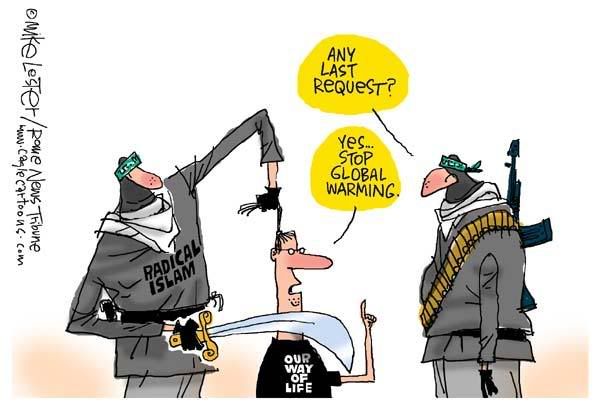California has managed to stop their decline in oil production in spite of all the local, state and federal roadblocks.
Posted on 08/29/2014 7:15:32 AM PDT by thackney
The federal government will resume oil and gas leasing in California following a report released Thursday that found little scientific evidence that fracking and similar extraction techniques are dangerous.
The Bureau of Land Management said the report — and additional environmental reviews — will allow it to begin leasing on public land next year. The announcement is welcome news for energy companies that have been shut out of the oil-rich San Joaquin Valley and Central Coast.
But critics, including environmental organizations whose lawsuits led to a judge's order to halt leasing last year, said the analysis was rushed by the BLM and relied on spotty information.
The study was conducted by the California Council on Science and Technology, a nonpartisan scientific research organization established by the state Legislature to advise state officials. Its authors noted that they had little time and scant information on which to base conclusions, citing widespread "data gaps" and inadequate scientific resources for a more thorough study.
For example, the report found no evidence of water contamination from fracking in California, but the scientist directing the research, Jane Long, said researchers also had no data on the quality of water near fracking sites.
"We can only tell you what the data we could get says," said Long, a former director at Lawrence Livermore National Laboratory. "We can't tell you what we don't know."
BLM California State Director Jim Kenna said in a conference call with the news media that the report was not a complete analysis of the effects of fracking. He said more environmental studies will be done as oil and gas development resumes.
Reviews will be conducted on a more localized basis and broader assessments will continue as the industry complies with California's new, stricter reporting requirements that begin next year, he said.
(Excerpt) Read more at latimes.com ...
Like it’s really gonna happen
And therefore we can't drive a stake through the heart of fracking yet.
California has managed to stop their decline in oil production in spite of all the local, state and federal roadblocks.
So where is CA gonna get the large volumes of water needed for fracking? CA is in a record drought.
Recycling of water used for hydraulic fracturing is growing in use. Local areas where water volumes are a bigger concern can push this as a requirement, or price the water such that recycling becomes an economic choice.
Drillers Begin Reusing ‘Frack Water’
http://online.wsj.com/news/articles/SB10001424052970203937004578077183112409260
Fracking Recycles During Drought
http://www.forbes.com/sites/brighammccown/2014/08/18/fracking-recycles-during-drought/
- - - - - - -
But be aware, in spite of the media hype against “Fracking”, how the water use compares to other larger consumers of water.
California uses about 85 million acre-feet of water each year, with 45 percent meeting environmental mandates and habitat requirements in the Delta region and other areas. The remaining 40 percent is allocated for agriculture, 10 percent for residential, and the rest apportioned for industrial usage.
Comparatively, the amount of water used in fracking constitutes about .0004 of a percent of the water used in the state; the same amount used by 500 households or single golf course over a year.
As always, the market takes care of the situation, despite the best efforts of politicians and greens to foul things up. Every greenie I know drives a car and heats a home.
The current balance will remain in place. Slowing production raises energy prices, leading to more production. If the price drops too far, production slows, bringing prices back to where production is profitable.
It’s inexorable, until a cheaper source per unit of energy is available.
Thanks for your info. So the water used annually by a single golf course will run how many tracking wells, on average?
First recognize that fields can very greatly, a place like South Texas Eagle Ford uses far more water than most other hydraulic fractured wells.
Secondly, a golf course in Southern California uses far more water than other, wetter, locations.
So this isn’t an apples to oranges comparison, it can be apples to aircraft carrier comparison.
So with those qualification, I still don’t know. I haven’t found the way source for how many wells were hydraulically fractured in California during 2013.
But according to the Forbes article, one golf course there equals all of the fracked wells there.

I have heard that the Monterrey shale deposits, while huge, are not now technically recoverable. Given that the technology always seems to be improving, do you think that oil producers will eventually be able to extract some of it?
It think economically recover much of it would be a better description.
And yes, I think the amount that is economical to produce will increase with technology advances. How much and when are the questions that I cannot answer.
Why not?
They certainly can for Globull Warming. /S
For data on fracking wells in California go to DOGGR database at the California Dept. of Conservation.
The last time I checked California had a puny 501 fracking wells, all in Kern County in a very confined area far away from most water basins used for domestic water supply.
501 wells sounds like a lot but compared to other states it is a very tiny percentage.
Could be a boon for California. With all their welfare programs they sure could use additional revenue sources such as taxes on production :)
So one golf course equals less than 500 fracked wells?
California has a lot of golf course.
Disclaimer: Opinions posted on Free Republic are those of the individual posters and do not necessarily represent the opinion of Free Republic or its management. All materials posted herein are protected by copyright law and the exemption for fair use of copyrighted works.